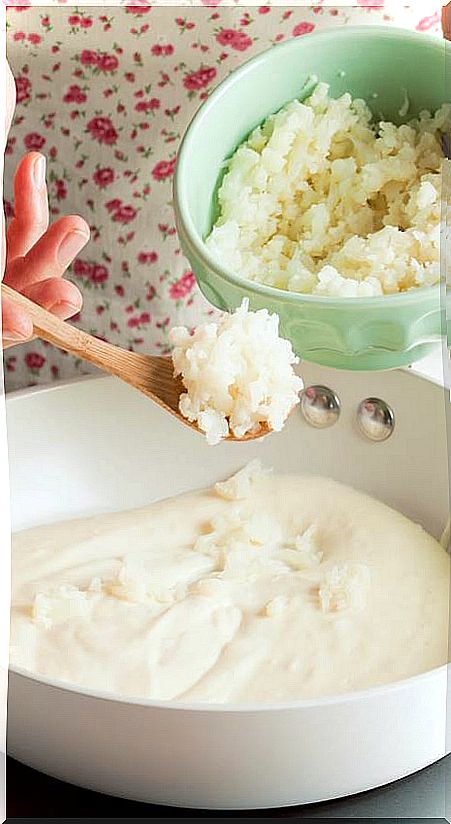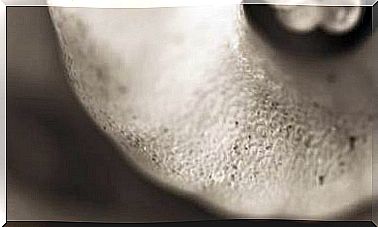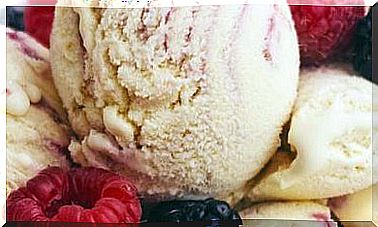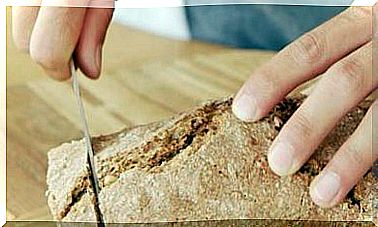Did You Know That Roux Is The Secret Of A Good Béchamel?
A good final result in the kitchen is due to some basic techniques, such as roux, which serves as the basis for making and later thickening many of your broths or sauces, such as béchamel.

In traditional cuisine we have many preparations that help us on a daily basis, improving both flavors and textures. In general, they are simple techniques or basic recipes that are used later in the preparation of different dishes.
Today I’m going to talk about roux, the basic mix we make when we start a béchamel. But what is a roux and how is it made?
The roux, the base that will save many of your recipes
A roux is simply a mixture of fat and wheat flour heated until obtaining a homogeneous paste from light to dark color (depending on how much we toast the flour).
When cooking it in this way we have a base with color and flavor that also thickens sauces and broths, without the inconvenience of doing it with the ingredients separately: that is, without the problem that they do not integrate well in liquids, that the recipe it remains lumpy, that the taste of flour does not disappear (or it costs to disappear), etc.
The proportions of flour and fat
Traditional roux is made with a 2: 1 ratio of flour to fat, by weight. That is, if we put 15 grams of oil, we will put 30 of flour (be careful, the proportion by volume is not the same as by weight; oil, margarine, coconut oil and other fats are denser than flours in general ).
This proportion is not fixed either, it can be varied slightly depending on the results we want to obtain. For example, when we want a very white sauce with little oil or margarine flavor.
Butter is used for the traditional roux. But there is no problem in substituting butter for olive oil or other vegetable oils (or vegetable margarines).
The biggest difference between using oil or butter (apart from flavor) is that butter (and margarines) contain a small amount of water (when you melt over medium or high heat margarine you notice that bubbling), while oils contain absolutely no No water.
We must not compensate for this “loss” of water because it can really be an advantage: the starches in the flour do not absorb it and it is easier to avoid lumps that are difficult to break up.
What flour do I make it with?
The traditional recipe has always used normal white wheat flour because it is very fine, without cereal fragments that irregularly color the roux, and with a white color that serves as a “thermometer” of how we want our roux (whiter, blonde or brown ).
The longer the flour is cooked with the oil, the more it roasts and turns brown.
You can also change the flour. There are very white flours that after a time of cooking with the oil do not finish turning as dark, like rice flour. In this case, the important thing is to control the texture and aroma that it is giving off.
The gluten – free flours, in general, are also suitable for roux, the better the finer they are. You can make it with quinoa, millet, buckwheat, teff flour, etc. Each of them has a characteristic color that will also darken with cooking.
The whole wheat flours give the roux an extra aroma and flavor. You can use whole wheat flour perfectly, or oatmeal, brown rice, amaranth, etc.
Just keep in mind that if you make a light roux with the intention of creating or thickening a sauce, it can absorb more water than that made with white flour, or what is the same, it can thicken more than expected.
What utensils do I need?
To make a roux we need a saucepan or small saucepan, a wooden or bamboo spoon or a whisk (whatever it is, that does not scratch the bottom of the saucepan), oil and flour. The reason for using a saucepan and not a frying pan is that more heat condenses on the bottom.
In a pan, the upper part cools down quickly and in this case we need to keep that heat in the mixture in a more or less homogeneous and sustained way.
Prepare to save
If you want to make a storage quantity, use at least 50 grams of oil and 100 grams of flour.
Put the oil first, over a low heat, and then add the flour little by little while stirring. In a couple of minutes, a soft, light-colored dough will form. If we leave it on the fire a little longer, always stirring, it will brown. The minimum time for it to be done and the flour to be cooked is 3 minutes. When it reaches the color you like, turn off the heat and remove it.
Store your roux in the fridge and you’ll have it ready whenever you want to make sauces like bechamel, velouté, mornay (make it vegan using vegan cheese or debittered brewer’s yeast), mushroom sauce, or any side sauce.
Also use it in your stews and stews to make them creamier, darker and richer.









